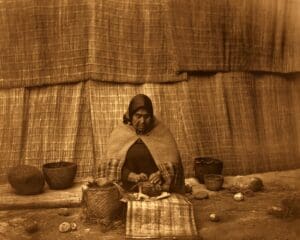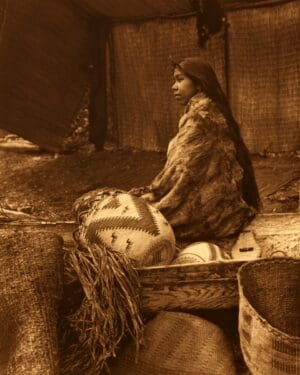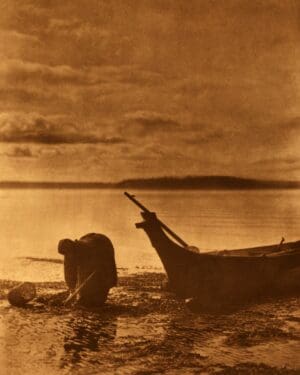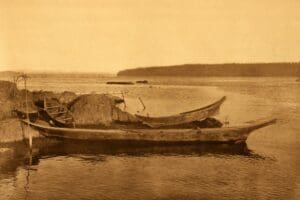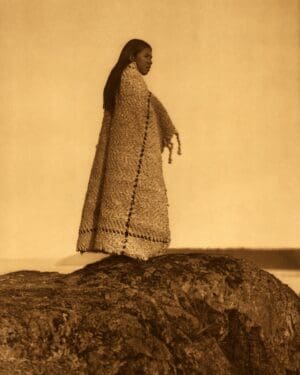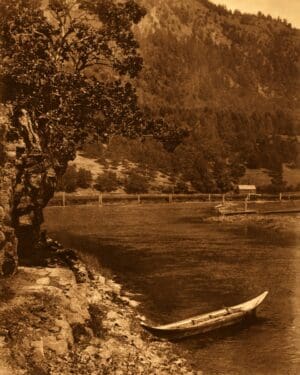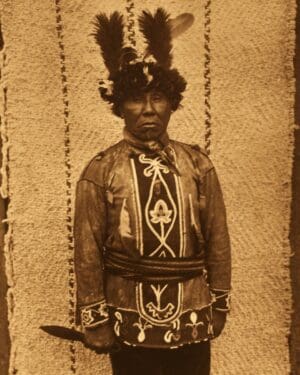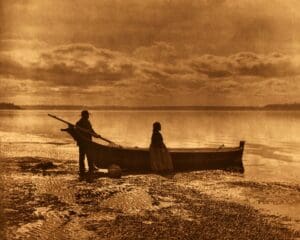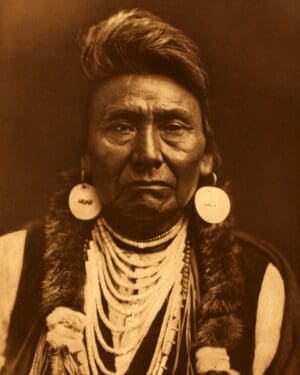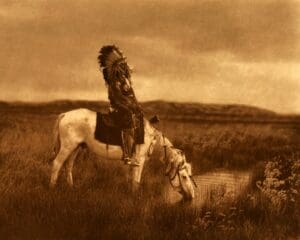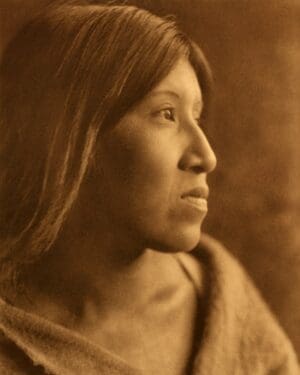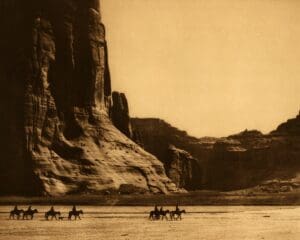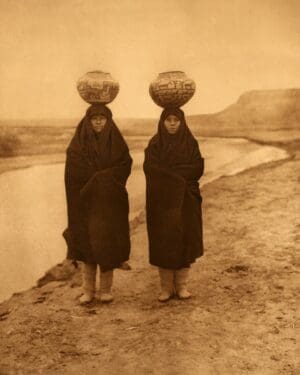Coast Salish Native Americans
Coast Salish Indian Photos by Edward S. Curtis
Tribal Summary
Dress
In the home, and in warm weather at their outdoor vocations, Coast Salish men ordinarily were quite naked, and when they wore clothing the usual garment was a fur or goat-hair robe falling to the knees.
Women wore a knee-length kilt of cedar-bark fringe. Some of the Puget Sound tribes used to a considerable extent deerskin clothing of the kind common to the plains Indians – shirt and leggings for men and one-piece gown for women. Moccasins were worn almost exclusively on long overland journeys. In many tribes both sexes used a basketry hat as a shield from sun and rain. Bits of abalone shell were valued ear-pendants, and every person of means had a necklace consisting of many strands of dentalium shells or of clam-shell beads.
Men parted the hair in the middle and wound it into a knot at the crown of the head or the base of the skull; women parted theirs from forehead to nape of the neck and allowed the two braids to hang down the back or in front of the shoulders. Tattooing was probably not an indigenous custom, but was practiced in early times by some tribes.
Dwellings
Houses were made of cedar boards on a substantial framework of cedar posts and fir beams and rafters. In the Puget Sound district the roof had a single pitch from front to back, the boards, arranged like tile, extending in the same direction; the overlapping wall-boards were horizontal. The average dimensions were: height, twelve to sixteen feet in front and seven to ten feet in the rear; length, forty to one hundred feet; depth, twenty to forty feet. The Salish tribes in southwestern Washington and those on Vancouver island built houses with a ridge-pole extending from front to back, the roof-boards usually running in the direction of the slope from ridge to eaves, and the wall-boards as a rule perpendicular. Summer houses and temporary camps were made by spreading rush mats on a framework of poles, the more substantial ones being of the same form as a wooden house.
Food
Fish and especially salmon, was the principal food. In the streams, at the season of the salmon run, the fish were easily taken in wicker traps or in nets placed above openings in wattle-work weirs that obstructed the channel. Spears, dip-nets, drift-nets, and trolling lines were used according to the demands of time and place. For winter food the fish were spread open and dried in the smoke of the dwellings. Herring, herring roe, and clams were important foods. Deer, elk, and marine mammals furnished meat, and a wide variety of berries and roots, especially huckleberries, salal berries, camas, and fern-roots, were gathered.
Showing 1–9 of 36 results
-
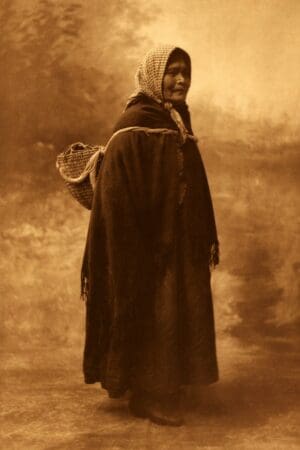
Basket carrier
Price range: $43.75 through $247.50 -

Basket maker
Price range: $26.25 through $172.50 -

Chief’s daughter – Skokomish
Price range: $26.25 through $172.50 -

Clam digger
Price range: $26.25 through $172.50 -

Cowichan canoes
Price range: $43.75 through $247.50 -

Cowichan girl
Price range: $26.25 through $172.50 -

Cowichan River
Price range: $26.25 through $172.50 -

Cowichan warrior
Price range: $26.25 through $172.50 -

Evening on Puget Sound
Price range: $26.25 through $172.50

